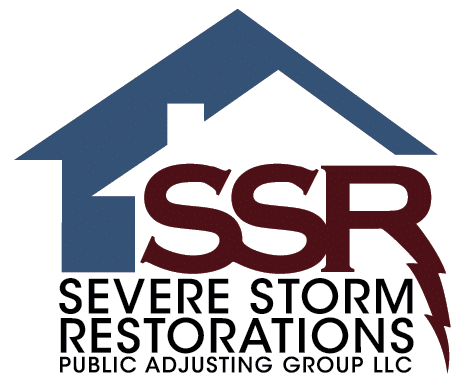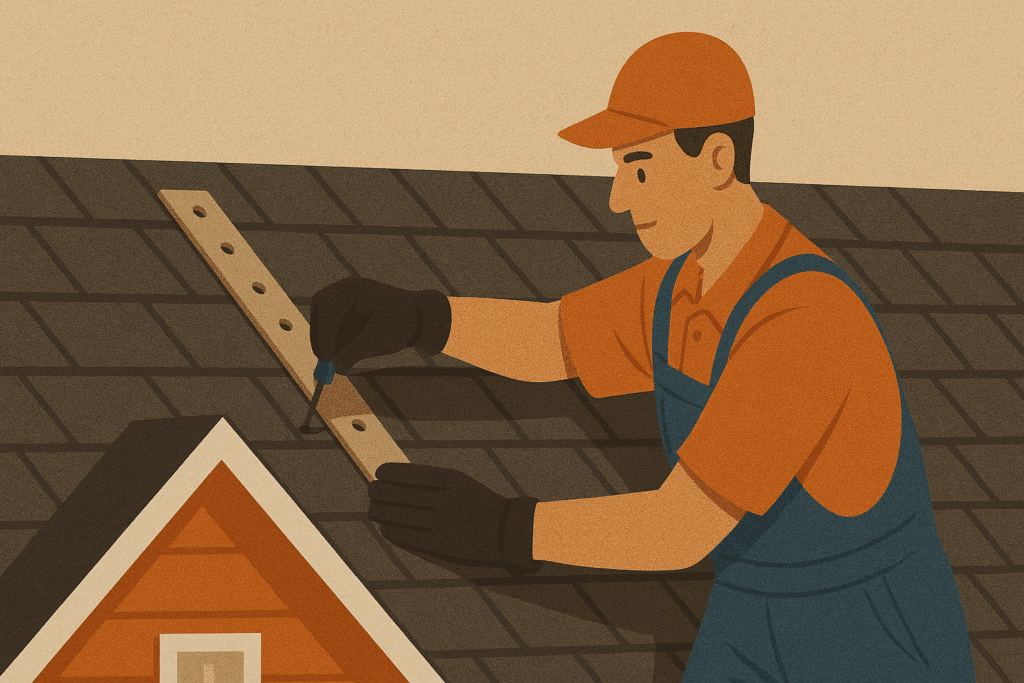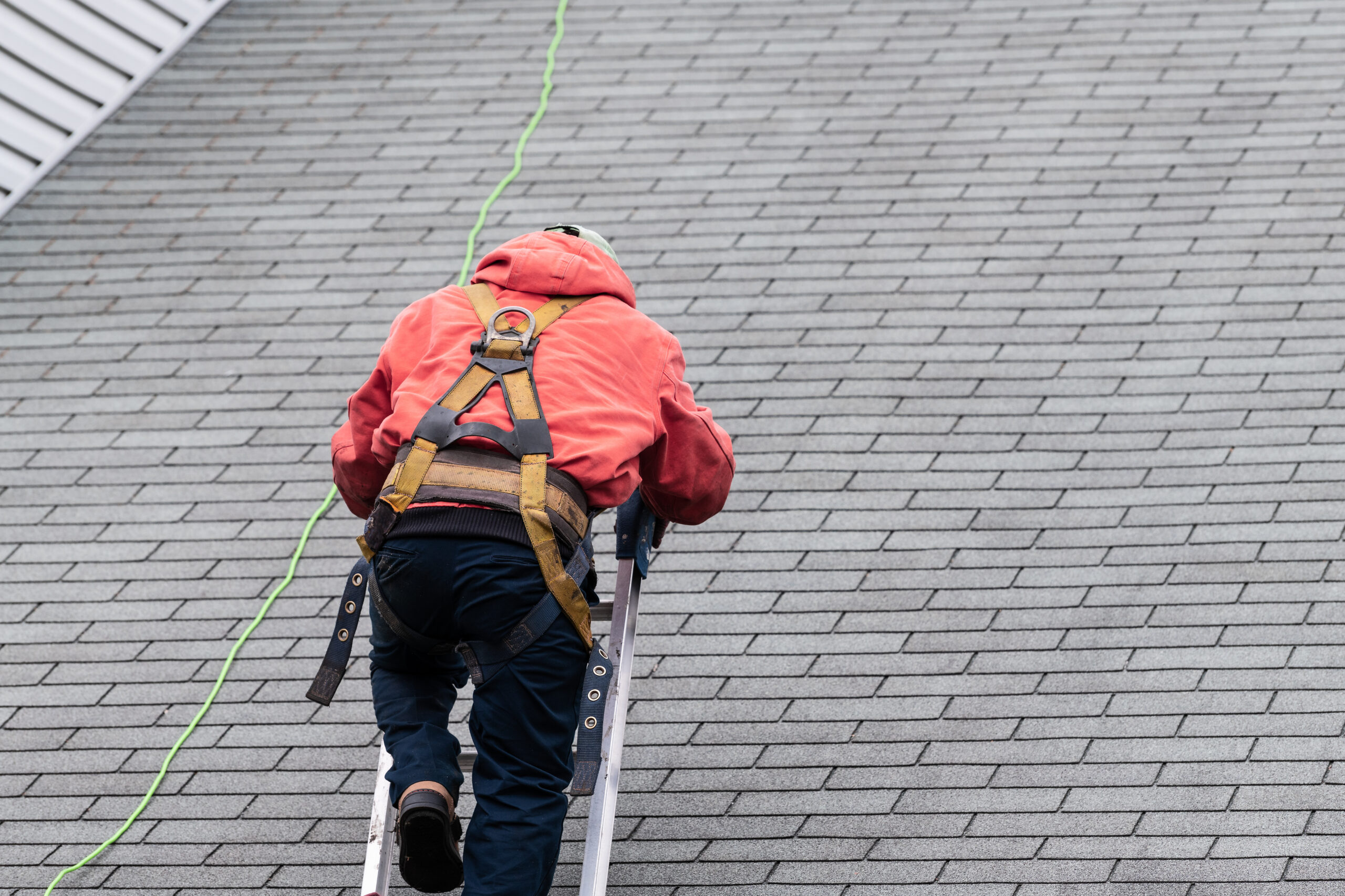Preparedness Begins at the Top
Roof storm prep should be a top priority for any homeowner living in storm-prone areas. Taking action before a storm hits can be the difference between minor fixes and major repairs—or worse, total roof replacement. As weather patterns grow more unpredictable, the importance of proactive roof maintenance becomes even more urgent. This guide provides essential strategies to storm-proof your roof and protect your home from severe weather damage. By following a detailed checklist, homeowners can gain peace of mind knowing they’ve done everything possible to prevent roof storm damage and keep their families safe.
Being proactive also saves time, money, and stress in the aftermath of a storm. Wind, hail, and heavy rain are common culprits of roof damage, but with the right preparation, your home can withstand these forces. Investing time into prevention means avoiding the chaos and cost of emergency repairs. This guide is designed for homeowners of all skill levels—whether you’re checking off simple tasks yourself or hiring a professional, each section gives you the tools to stay protected before, during, and after a storm. Let’s break down the essential elements of an effective roofing checklist before the storm arrives.
Table of Contents
Inspect for Existing Weaknesses
The first step in storm-proofing your roof is identifying current vulnerabilities. A minor crack or loose shingle might not seem urgent now, but under high winds or heavy rain, it could turn into a major leak or even structural damage. Walk around your home and use binoculars to spot cracked, curled, or missing shingles from the ground. Also look for rusted flashing or sagging areas that may collect water.
Schedule a professional inspection at least once a year, ideally before storm season. Professionals can access areas not easily visible from the ground and often use drones or thermal imaging to detect hidden moisture issues. Catching problems early ensures that your roof is strong enough to handle upcoming weather challenges.
Clear Gutters and Downspouts
Your roof’s drainage system is just as important as the shingles when it comes to storm protection. Clogged gutters and downspouts can cause water to back up under the roofing material, leading to leaks and mold growth. Before the storm season begins, clear all leaves, sticks, and debris from your gutters. Flush them with water to ensure smooth flow.
While you’re at it, check for sagging sections or disconnected joints. Install gutter guards if you live in an area with lots of trees. Clean gutters allow rainwater to be diverted safely away from the home’s foundation, preventing erosion and basement flooding. This step is one of the easiest, yet most overlooked, parts of roof storm prep.
Trim Overhanging Trees and Branches
Overhanging limbs can become dangerous projectiles during high winds. Trimming them back is a simple but powerful way to prevent roof storm damage. Start by identifying any branches hanging directly over your home, especially those that could fall on the roof or break windows if torn loose by wind.
Use a pole saw or hire a certified arborist to remove risky limbs. Tree maintenance also minimizes debris build-up in gutters and reduces the risk of insects entering the roofline. Keeping vegetation in check will also improve airflow around your roof, which can reduce humidity and prevent algae growth—making your storm prep doubly effective.
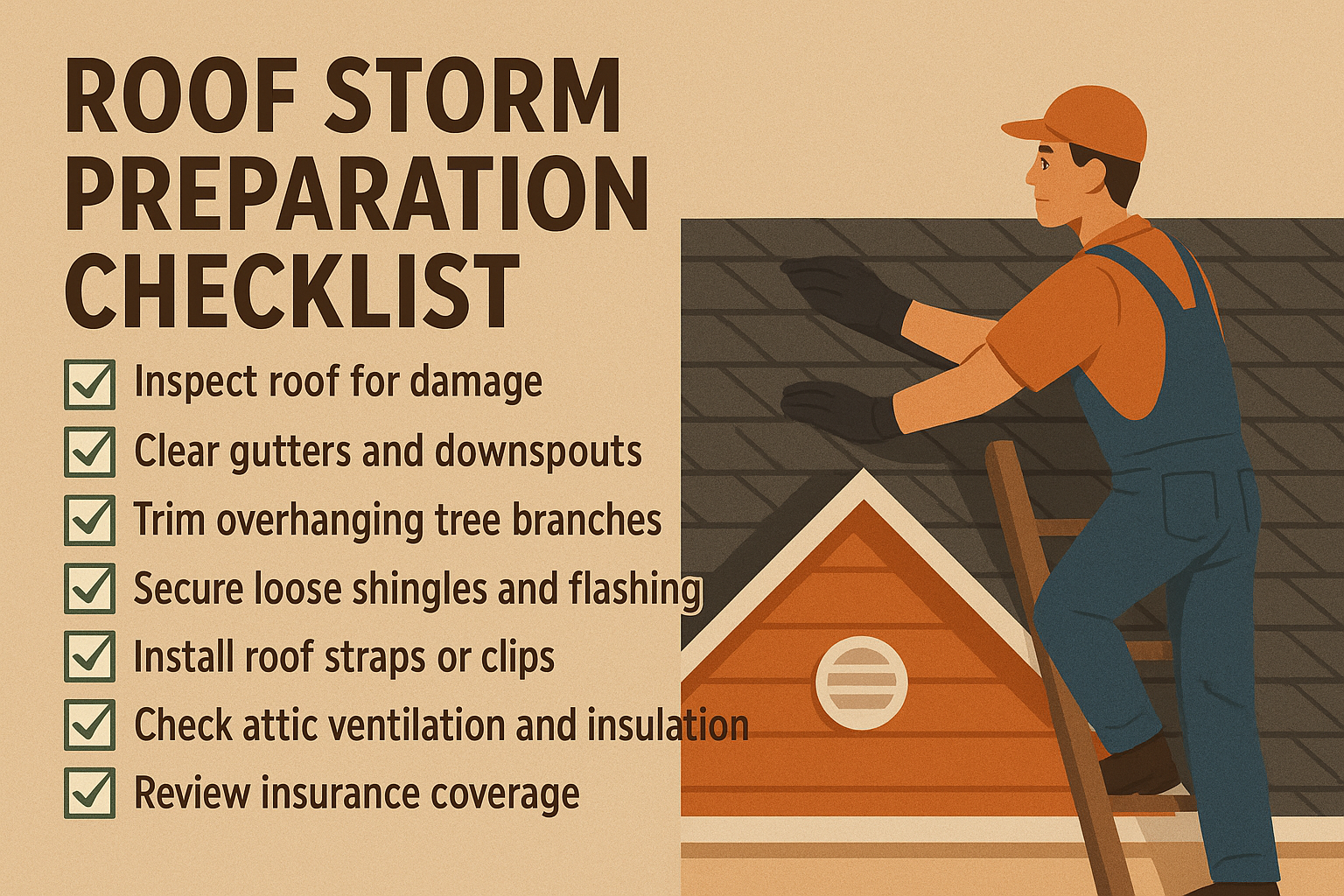
Secure Roofing Materials and Fixtures
Loose materials like flashing, ridge caps, or satellite dishes can be ripped off during a storm and cause more damage as they become airborne. Inspect these attachments to make sure they are tightly fastened. Re-nail or screw down anything that moves, and replace damaged materials immediately.
If you have a metal roof, make sure all fasteners are rust-free and tight. Skylights, vents, and chimneys should be sealed properly with high-quality waterproofing products. Roof storm prep also includes ensuring all exterior antennas or solar panels are securely bolted down. The goal is to eliminate anything that can become a liability in a windstorm.
Reinforce with Roof Straps and Clips
For homes in hurricane-prone areas, roof reinforcement is a critical upgrade. Roof straps or clips anchor the roof structure to the walls of your home, increasing its ability to withstand high winds. These devices are often installed during construction, but they can be retrofitted by professionals.
Installing hurricane straps involves accessing the attic to attach metal connectors from rafters to wall studs. Though this job is best left to licensed contractors, it’s one of the most effective ways to storm-proof your home’s roof. Reinforcement systems have been shown to significantly reduce roof lift-off in wind tunnel tests and real-world storms.
Check Attic Ventilation and Insulation
Proper attic ventilation helps equalize air pressure and minimize wind uplift during a storm. It also prevents heat and moisture buildup that can weaken your roof structure over time. Make sure vents are clean, free of obstruction, and protected with covers to prevent rain intrusion.
While inspecting ventilation, also check your attic’s insulation. Wet or compressed insulation won’t protect your home as effectively and can lead to mold issues. Updating these elements helps your roof perform better during a storm and keeps your home energy-efficient year-round. Balanced airflow is a subtle but powerful part of storm preparation.
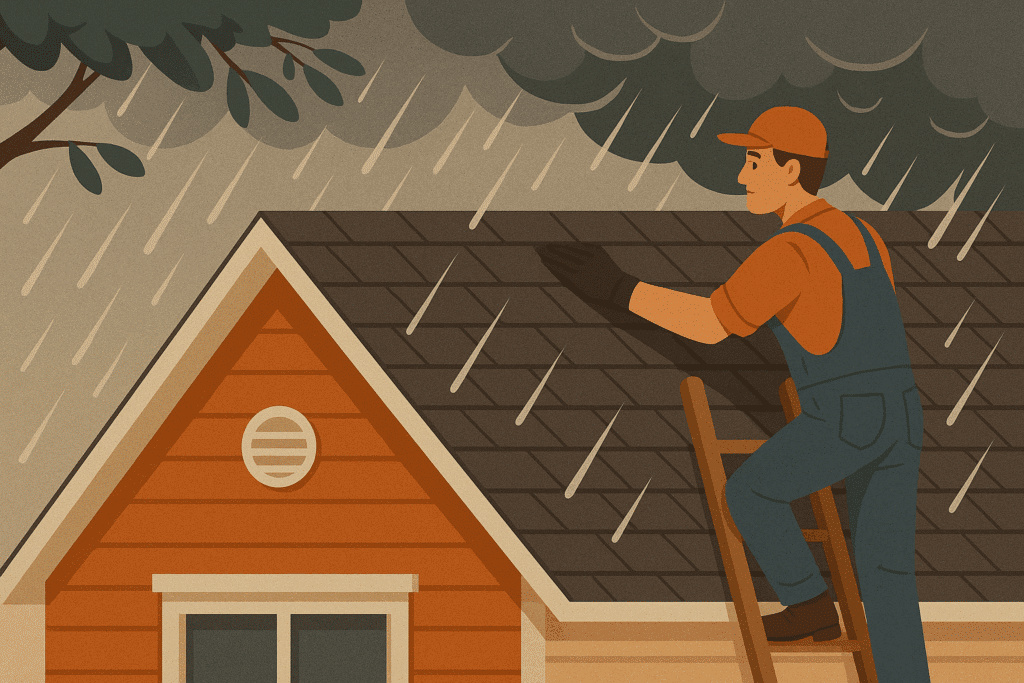
Understand Your Insurance Coverage
One of the most overlooked aspects of roof storm prep is financial protection. Read your homeowners insurance policy and understand what types of storm damage are covered. Know your deductible, and check if wind or hail requires special riders or exclusions.
Take clear photos of your roof and property before storm season begins. This documentation can speed up claims if damage occurs. If your insurance includes roof replacement or repair, ensure your contractor meets those guidelines. Knowing your policy details puts you in a stronger position when filing claims, reducing stress in the aftermath of a storm.
Create a Roofing Checklist Before Storm Season
Having a written checklist ensures that no vital steps are missed during roof storm prep. Your checklist should include: visual inspections, clearing gutters, trimming trees, securing fixtures, reinforcing weak points, and reviewing insurance documents. Post it somewhere accessible and review it every few months.
Also include contact information for your preferred roofing contractor, insurance agent, and emergency repair services. Preparedness isn’t just about the roof itself—it’s about having a complete plan in place. A roofing checklist before storm season will help you stay organized and focused when time is limited and the weather forecast is concerning.
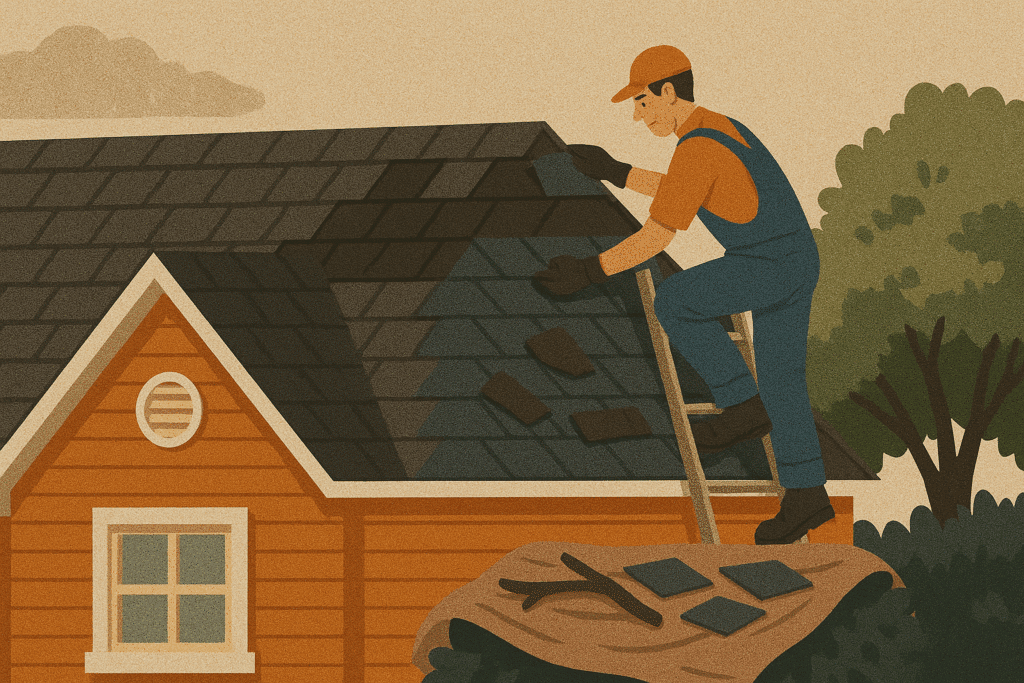
Conclusion – A Strong Roof is a Safe Home
Storms may be unpredictable, but your preparedness doesn’t have to be. By investing time in roof storm prep, you create a first line of defense that safeguards your home, possessions, and loved ones. Each preventive step you take—from trimming trees to inspecting flashing—builds a stronger, more resilient home.
Storm damage can be costly and devastating, but much of it is avoidable with routine maintenance and forethought. As you check off each task on your roofing checklist, remember that peace of mind starts with preparation. Don’t wait until the clouds gather—protect your home before the storm hits.
